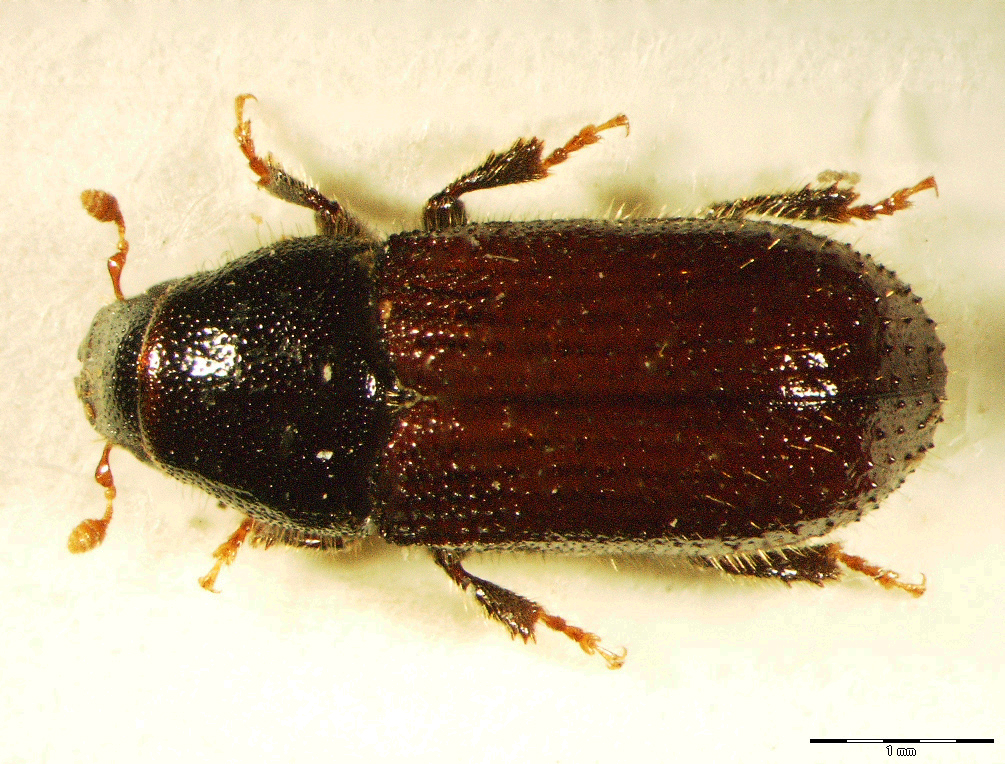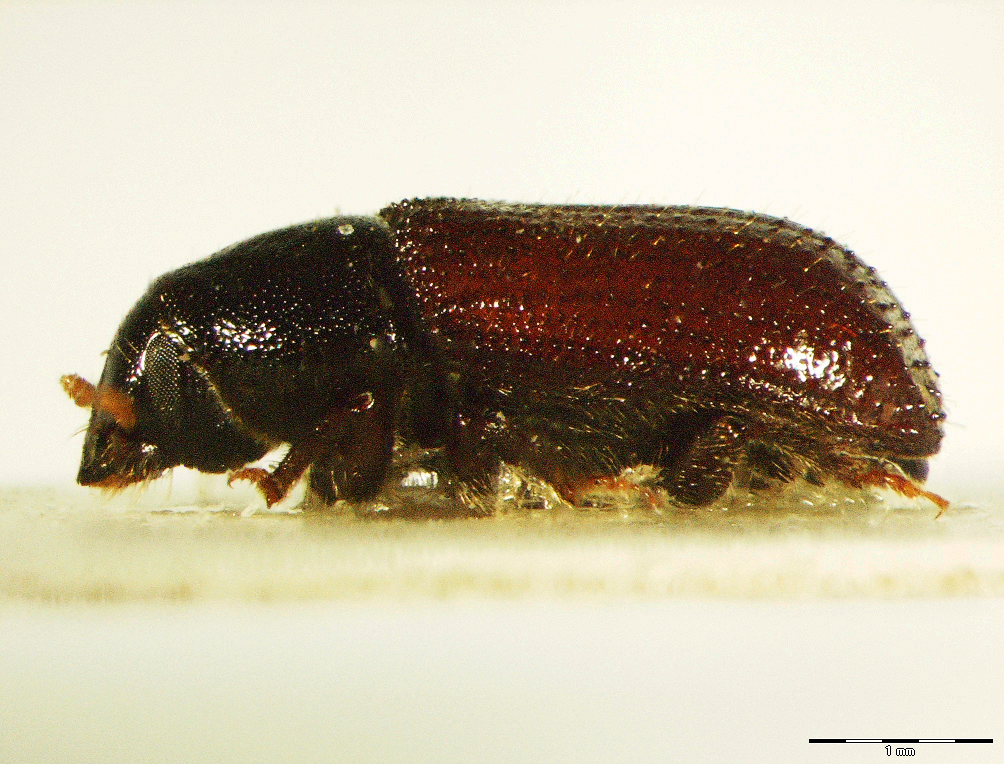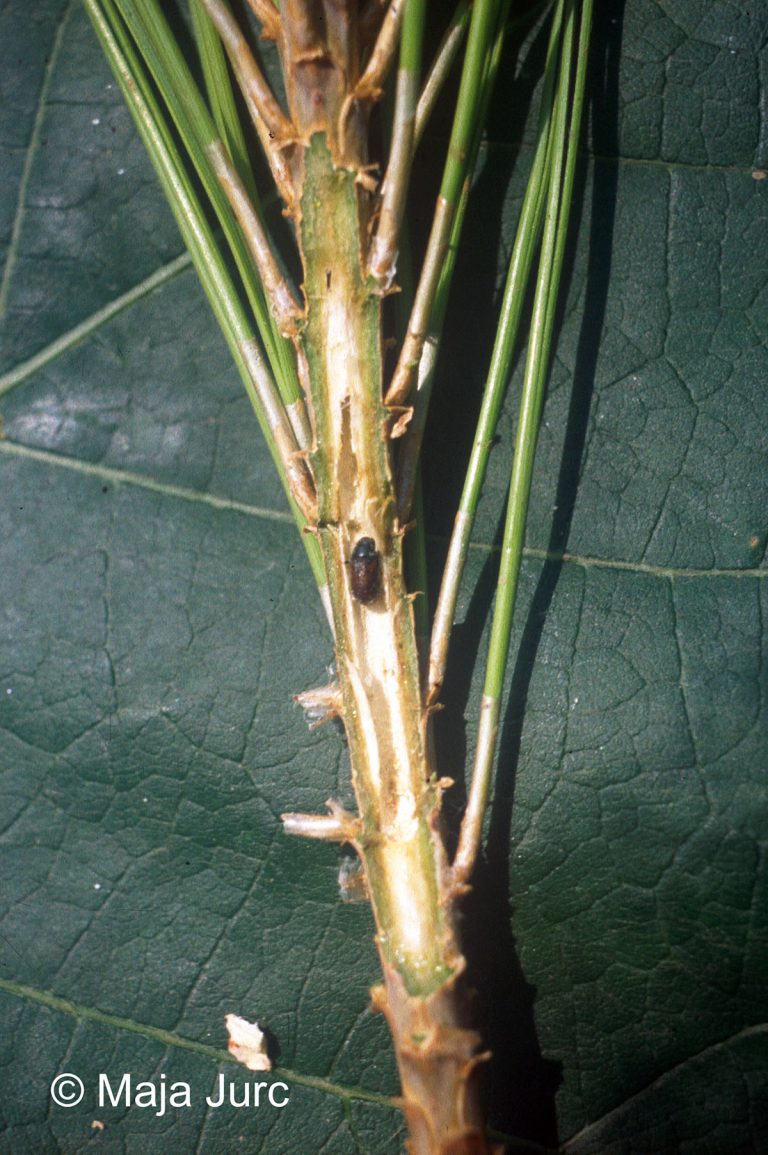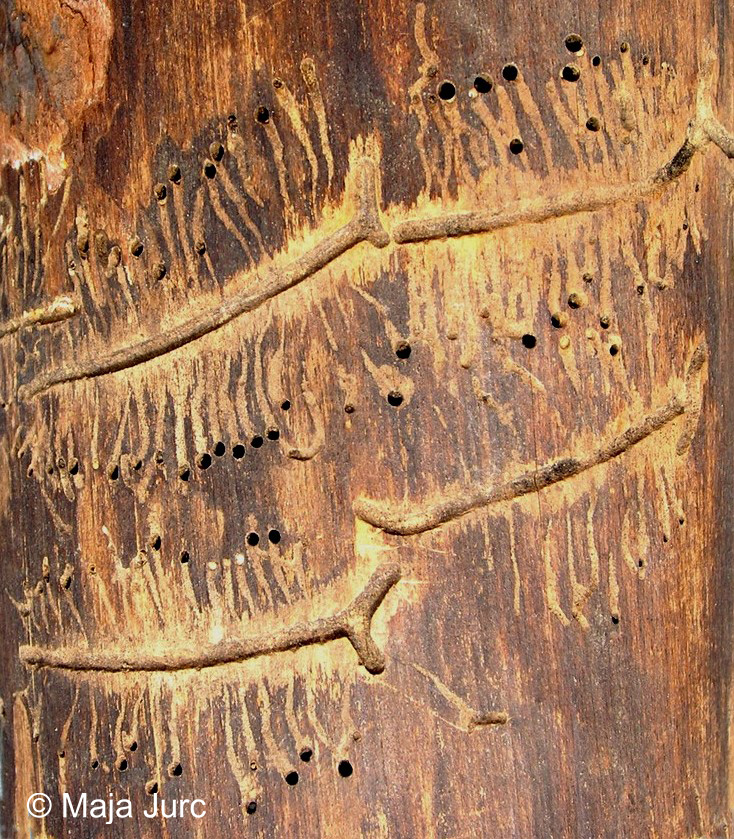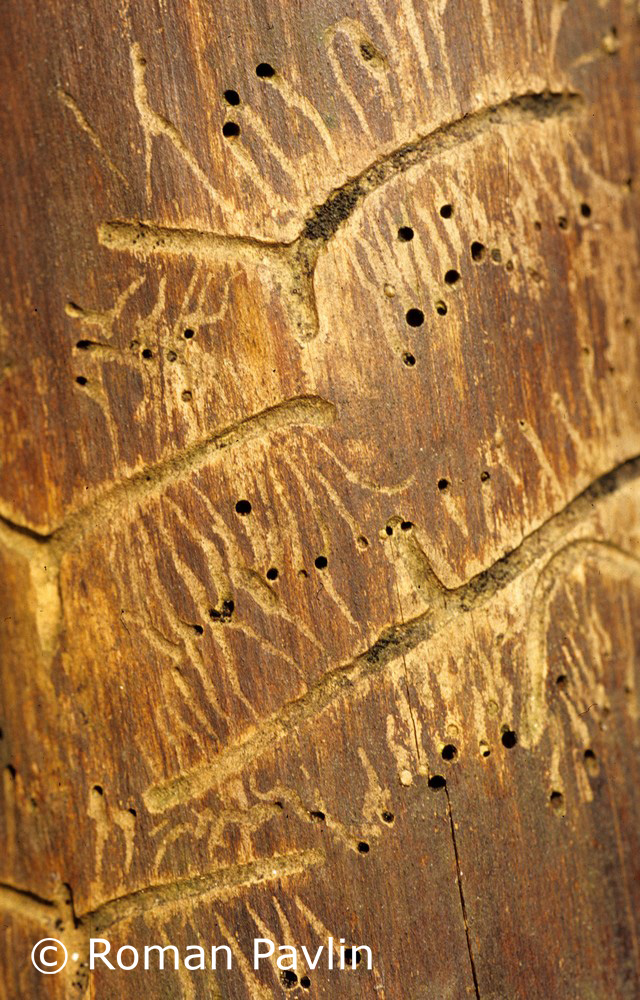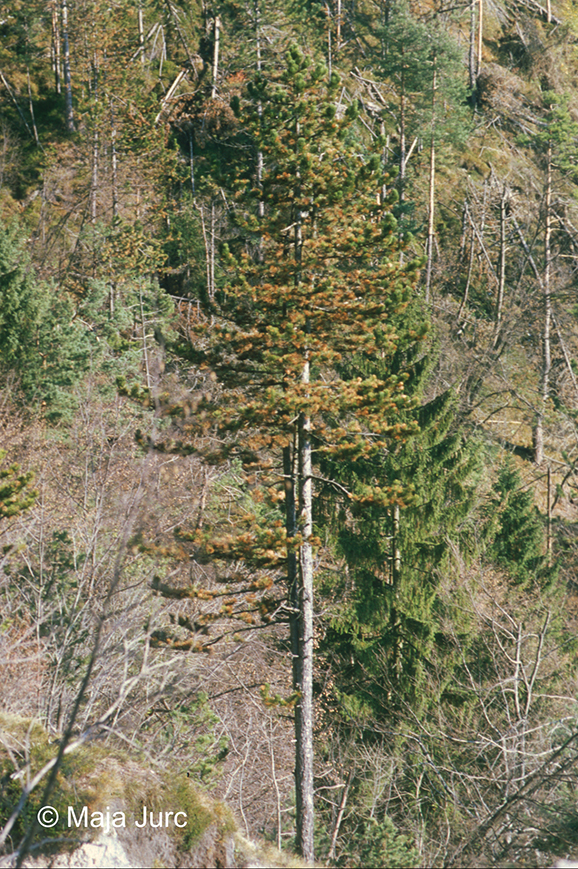09.02. Tomicus minor (Hartig, 1834)
Presence
E: AU BE BH BU BY CR CT CZ DE EN FI FR GB GE GR HU IT LA LT LU MC NL NR NT PL PT RO SK SL SP ST SV SZ TR UK YU
A: ANH ES CY FUJ GAN GUI GUX HEB HEI HEN HUB HUN JA JIA JIL JIX KZ LIA MG NC NE NMO SC SCH SHA SHX SCH TR WS YUN ZHE
Figure 42: Tomicus minor, dorsal, lateral (Photo: Maja Jurc)
Older catalogs and keys – citations of name
Siegel 1866: Hylurgus minor Hartig; Grüne 1979: Blastophahus minor (Hartig, 1834); Freude, Harde, Lohse 1981: Blastophahus minor Hartig; Titovšek 1988: Blastophahus minor (Hartig); Pfeffer & Knížek 1993: Tomicus minor (Hartig, 1834); Pfeffer 1995: T. minor (Hartig, 1834) (Myelophilus minor Eichhoff, 1881; Blastophahus minor Eichhoff, 1864; Tomicus minor (Hartig)); Vega & Hofstetter 2015; Faccoli 2015.
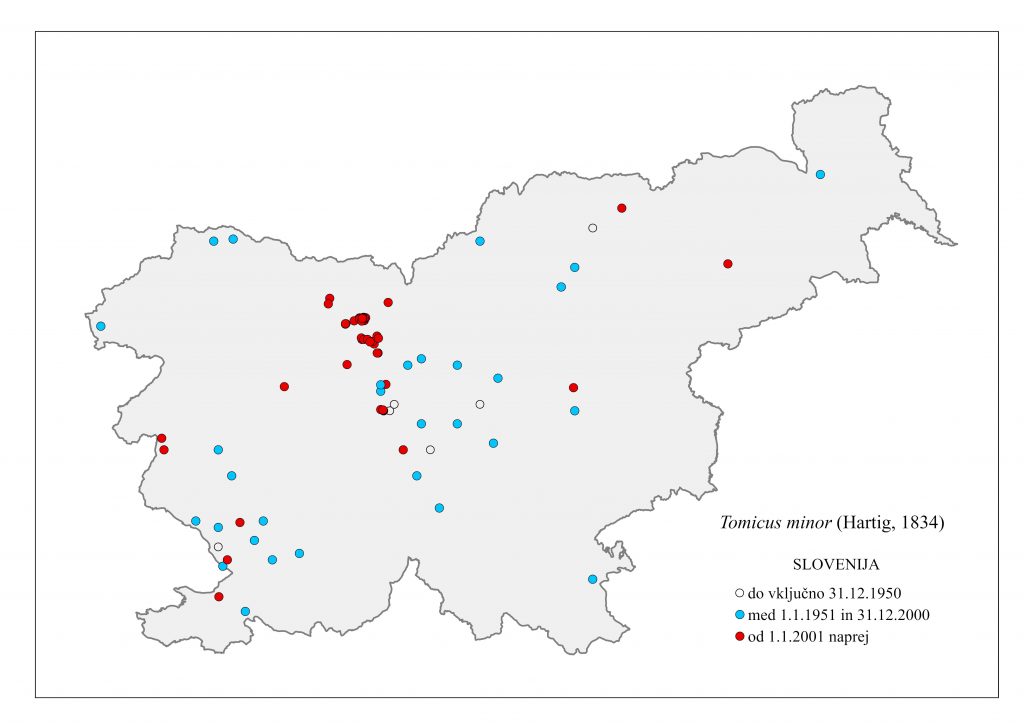
Figure 43: Tomicus minor, distribution map according to historical and recent data
Ecology and presence in Slovenia
The species occurs in Europe, Siberia, Crimea, the Caucasus and Asia Minor. Siegel (1866) mentions that T. minor “lives in Carniola together with the species T. piniperda and Hylurgus ligniperda“. In Slovenia, it is common, with localities in all Slovene regions (Figure 43). T. minor is a polyphagous species of continental pines, mainly Pinus sylvestris and P. nigra (P. mugo, P. densiflora, P. halepensis, P. pinaster, P. pinea, P. brutia, P. strobus, P. heldreichii, P. cembra). In most parts of Slovenia, the most common host is P. sylvestris, and in the Primorska and Notranjska regions, also P. nigra. It has also been found on P. strobus (Ljubljana) and P. contorta (nursery, Prekmurje). It infests thin-trunked parts of the tree, usually in the crown. Monogamous, bores a biramous transverse tunnel system, each arm 3-6 cm long by 2 mm wide, both arms made by a single female. The short larval tunnels run perpendicularly from the maternal tunnel, the pupation chamber at the end is sunk deep into the sapwood. Adults are medium-sized, measuring 3.2-5.2 mm in length (Figure 42). Floemophagous and xylomycetophagous species. Supplementary or maturity feeding takes place in the piths of annual shoots, hence the species is also primary. Common in dense pine forests damaged by snow or fire.

